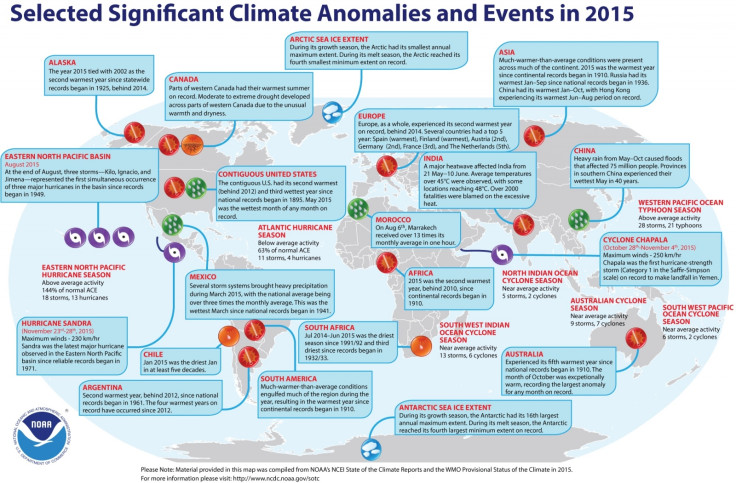Thought 2015 was hot? Extreme weather will be the new normal by 2025
Australia is expected to be the first country to transition to this more extreme norm.
2015's record temperatures are going to become the new global standard within 10 years if carbon emissions continue at their present levels, new research finds.
A transition to a new normal of higher temperatures and extreme weather events is inevitable on a global level, the researchers say, but there's still a chance to limit effects regionally through cutting carbon emissions.
The researchers used a supercomputer at the Australian National University to run climate models to predict what will happen globally and regionally if carbon emissions stay at their current levels. Their study – published in the Bulletin of American Meteorological Society – found that what is seen as a season of high temperatures and extreme weather events now will become normal by 2025.
After 2025, half of years will be warmer than the extreme 2015 levels and half will be cooler, Lewis says. The researchers came up with this half-warmer, half-cooler definition for what makes a new normal – a term commonly used in climate science but previously with no concrete scientific definition.

"Australia will be the canary in the coal mine that will experience this change first," says lead author Sophie Lewis of ANU. Australia had a regional record hot summer in 2013, with temperatures pushing 50°C, leading to significant pressure on health services and infrastructure. This has become known as Australia's angry summer.
"If we don't act quickly Australia's 'angry summer' of 2013 may soon be regarded as mild," says Lewis. "Imagine for a moment, if a summer season like 2013 became average. The likely impacts of an extremely hot year in 2035 would beyond anything our society has experienced."

However, reduction of emissions in line with the lowest-carbon scenario outlined by the Intergovernmental Panel on Climate Change could mean that individual regions could prevent this new normal kicking into effect. The lowest pathway represents of a scenario that is likely keep global warming below 2°C above pre-industrial temperatures.
"It gives us hope to know that if we act quickly to reduce greenhouse gases, seasonal extremes might never enter a new normal state in the 21<sup>st Century at regional levels," Lewis says.
The UN Environment Programme released a major report last week saying that in order to limit climate change to a 2˚<sup>C increase, another 25% must be knocked off emissions on top of the reductions pledged in the Paris agreement reached at the UN's COP21 meeting in December last year.
© Copyright IBTimes 2025. All rights reserved.






















